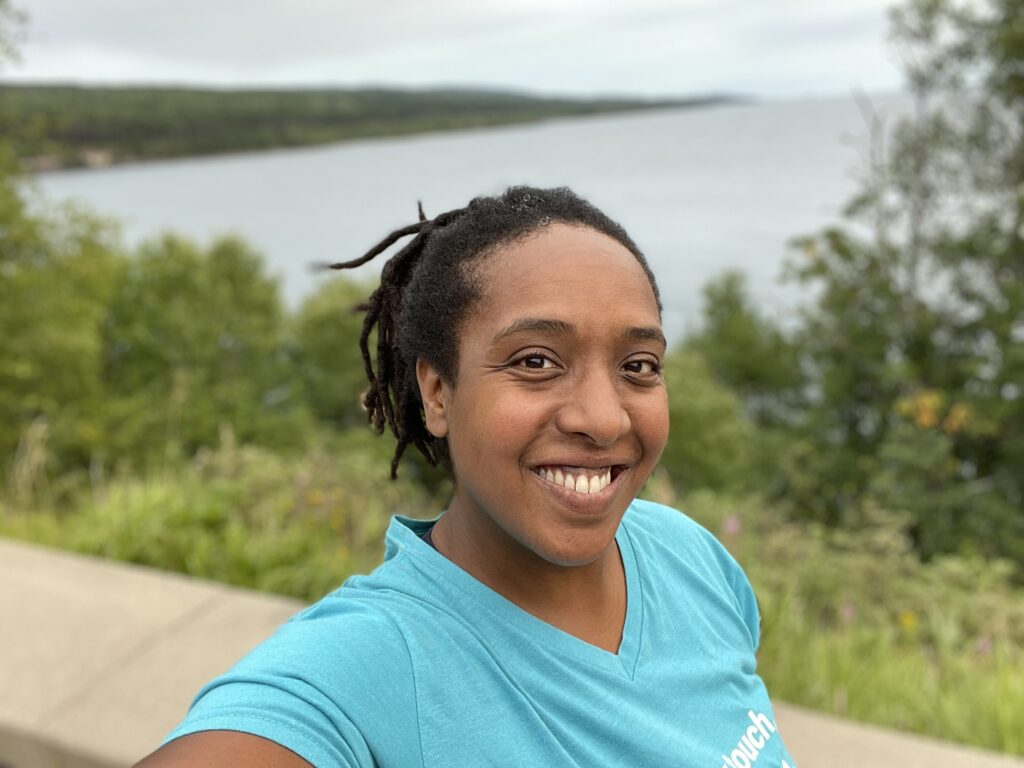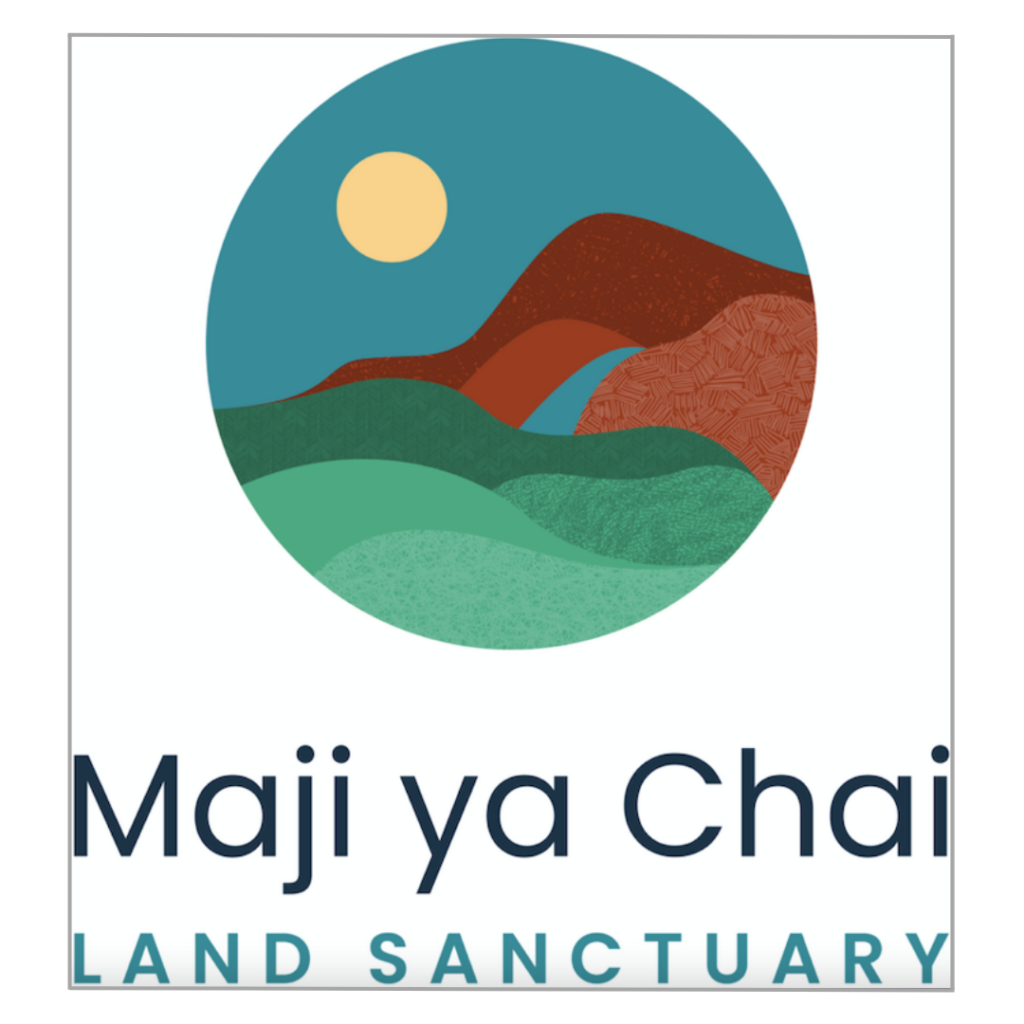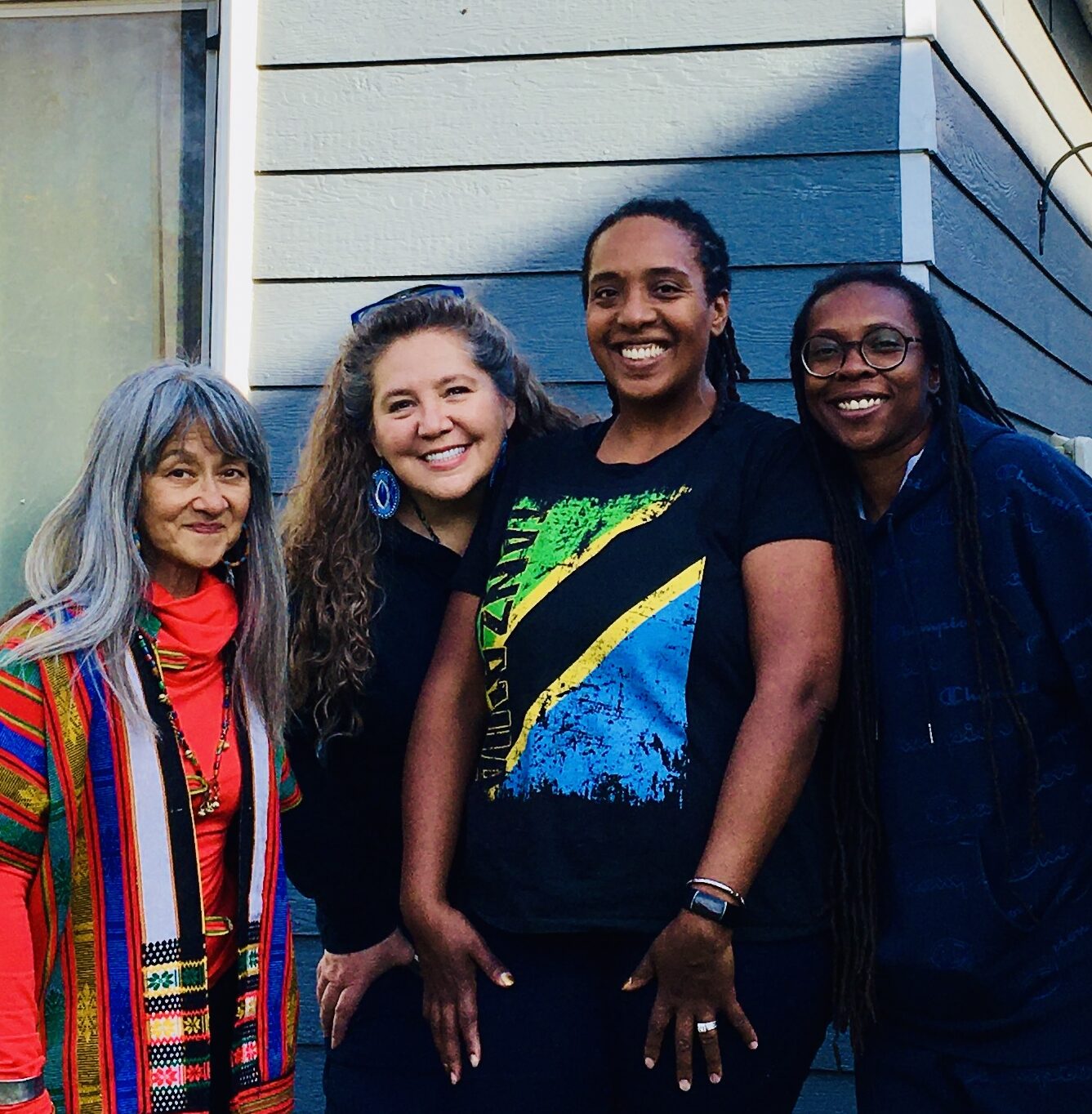Welcome to the North Shore, Maji ya Chai
April 27th, 2023
A Q&A with founder Rebeka Ndosi

Recently, we had the honor of sitting down with Rebeka Ndosi, founder of Maji ya Chai Land Sanctuary, to learn more about the Trail’s newest neighbors.
Located outside of Two Harbors, the sanctuary is a Black-led, nature-based healing retreat center to provide rest, reconnection, and rejuvenation of mind, body and soul for Black, Indigenous, and communities of color across generations.
The Superior Hiking Trail Association values encouraging and promoting outdoor experiences for all, and envisions our Trail users and the surrounding communities will be increasingly inclusive and welcoming. A connection with nature is integral to being healthy, and building environmental awareness and stewardship of our wild spaces.
The SHTA believes Maji ya Chai Land Sanctuary will be a great asset to the North Shore. Their mission and vision are based on a need in our region to better serve Black, Indigenous and People of Color communities with outdoor recreation opportunities in an inclusive, welcoming environment, a core value our organizations share.
What is Maji Ya Chai Land Sanctuary?
We are an organization that is creating a land-based space for rest, healing, and connection centering People of Color. Our vision is to have a space in nature where we can be at ease, experience deep connection, and practice listening and paying attention to our spirits, the land, the stars, and our relationship to and reciprocal partnership with them. All of this is in the name of a thriving future.
What do you hope Maji ya Chai Land Sanctuary will make possible?
We hope to be a landing point for more black and brown folks to come up to the North Shore and experience what a special and rejuvenating place it is. People are coming up more, but it’s still a very white space. There’s a felt difference when a space is created for you by people who come from similar backgrounds, and there isn’t really anything like that on the North Shore. We’re building an accessible and truly welcoming space.
There’s a story I grew up with. I was born and raised in Minneapolis. I went to a predominantly white school for K-12. I always heard my peers talking about going up north to their cabin on weekends and summer breaks, and that was such a foreign concept to me. My parents weren’t born here. [Going to the cabin] wasn’t part of our family tradition. It isn’t something that is normalized or available for a lot of folks in this state, especially folx of color.

What does Maji ya Chai mean?
Maji ya Chai is the name of the village in Tanzania where generations of Ndosis have lived and farmed. It is the village where my family had land for generations. The name means “water like tea” because of the reddish-brown tint of the water due to the mineral-rich soil.
Could you tell us about yourself?
I was born and raised in Minnesota, in the Twin Cities. My parents met at the University of Minnesota. I’m half-Tanzanian and half African American. My father was born and raised in Tanzania; we are Meru people. He came to the U.S. on a full scholarship to Carleton College. That’s how he got to Minnesota, then went to the U of M for grad school.
My mother is originally from St. Louis, Missouri. The U of M had one of the only computer science programs in the country at that time, which is what she studied. They met at an international student reception. She was looking for free food. She saw the International Student reception, and the rest is history. My parents decided they wanted to spend their life and raise their family in Minnesota. I went away for college, and now live in Minnesota with my husband and our son.
My professional background is a little bit varied, I spent part of my career in children’s radio and television production – I was the first radio producer at Sesame Workshop and worked on the team that brought Sesame Street to South Africa (Takalani Sesame). I was also a TV producer at TPT. Presently, I work in the space of healing and healing justice as a practitioner of holistic health, healing coach and guide, and I am board-certified in acupuncture and Chinese Medicine. I also teach and train teachers in yoga and meditation across all ages, and practice Soul Answer Healing, a modality through which I support people in connecting with their own souls — their own wisdom. There are different names for it. I’m a counselor, but I’m more a tender of your most authentic self.
At what stage is the Sanctuary in its development?
Now that we are actually legal stewards of land, we are coming into a pre-design phase: wetland study, surveys, and determining the ways we can most responsibly build. We’re taking the lead from the land.
We’re going to find out what will be the healthiest, most sustainable way to build out the space — both structures and outdoor spaces — that will help to support people to be in partnership with the land. That will all be happening as we are going through the Conditional Use Permit process.
We’re definitely going to be building lodging and gathering spaces. Our focus is really on being rather than doing. There will be spaces to enjoy in groups or be on your own. We’re building an intergenerationally friendly space so young ones and elders and everyone in-between know the Sanctuary is for them.
In support of rest and healing, we’ll have some healing spaces: a larger movement space for yoga, meditation, or even music. We are also really excited about having hydrotherapy, a communal bathing experience with a sauna, steam room, and a hot tub, in connection with our movement space.
We’ll have practitioners come up to offer modalities like art, yoga, and more. We also want the space to be able to hold and support people’s traditions: ceremonies, traditional ways of gathering, and moving through life with the seasons.
We’re going to do some growing. There are a lot of land projects going or getting started in the state that are focused on food production and growing. We don’t have that as our primary focus, but fresh, nourishing food is essential for thriving, and we have the space for it. The land we purchased was a hobby farm, so we also hope to grow food.
We look forward to caring for the river as well. The Encampment River runs through the property.

How can the Superior Hiking Trail community support Maji ya Chai?
Just knowing that we’re here and saying hello is a good start. There will be opportunities for more structured support as we start to see more activity on the land, but we always are open to wisdom, stories, connections in the area, and connections to the land. We’re near the Trail, not right on it, but near it. It’s good to know there’s that connection. I think if people have questions, that’s great. If anyone wants to show up once we have our community meeting to approve the land use permits from the Lake County Board of Commissioners, we’d appreciate people coming to support us. I’m not sure on the timing of the meeting, yet. Hopefully it will happen in the fall.
Another important thing to know is that we are all relatives. We’re not building an island. We’re not building a space that is for People of Color only. We all have family and dear friends who are of European descent, but we think it’s really important to center People of Color and Indigenous people as our primary focus. When white people come, holding that intention will help them show up in a supportive way that honors the spirit and intention of the Sanctuary when they are there. We hope it’s a place that brings people together and helps with the healing of historical trauma.
The fact that there are categories of races has inflicted harm on all of us. Maji ya Chai will be a place where we can talk about the harm done by the artificial creation of race and the colonization of Indigenous lands, both here and across the globe, how the land that we’re on did not start with colonization, how we are living through the consequences of the past, and how we can seek to be better.
The land of my ancestors, the Meru people, was taken by force, and was colonized by multiple European countries. And my ancestors fought back. All people are still feeling the effects of the violence, uprooting and dehumanization of people who were forced away from our homes and ways of life by those who sought global power.
My belief is that the natural world supports us in deeply connecting with our spirits, our souls, and when we do so we can find the answers that will lead us towards building the thriving future we envision, where all of humanity knows we are one and live together as relatives. A better existence. We’ve got to have enough time and space and practice to dream of a different future. It’s a lofty vision, but it’s a true one for the land sanctuary.
Thank you, Rebeka, for introducing us to Maji ya Chai!
Life-long stewardship starts with making personal connections to the outdoors and being in an environment that fosters exploration and education around the interconnectedness of all living things. The SHTA welcomes Maji ya Chai Land Sanctuary to the North Shore as neighbors, Trail users, and collaborators. We hope the SHT community will do all we can to welcome and support Maji ya Chai as they work to bring their vision to reality.
